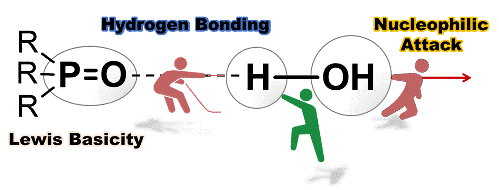論文がアクセプトされました(安達先生)
Origin of Catalytic Activity Differences Between Phosphine and Phosphine
Oxide-Based Structures in the Water-Crosslinkable Polyalkoxysilane Composition
S.Tanaka, K. Adachi,
Polyolefins J., 2021, 8, 49-62
DOI : 10.22063/POJ.2020.2813.1171
Abstract: Organocatalysts have attracted enormous interest in the water-crosslinking reaction in silane-grafted polyolefins (SGPOs) system owing to their simplicity, low toxicity and environmentally benign nature compared to organotin catalysts, which are most used in SGPOs system. We focus on organophosphorus compounds including four structure types as organocatalysts; phosphoric acids, phosphoric esters, phosphine oxides and phosphine. The catalytic activities of them for the water-crosslinking reaction in 3-methacryloxypropyltrimethoxysilane grafted ethylene-propylene copolymer (EPR-g-MTMS) system were evaluated using the ATR-FTIR technique and gel-fraction method. The phosphine oxides, phosphoric acids, and phosphoric esters possessing an O=PR3 or O=P(OR)3 unit were found to be an excellent catalyst for the water-crosslinking reaction in EPR-g-MTMS system, while phosphine (PR3) showed no catalytic activity on water-crosslinking reaction in this system, indicating the phosphoryl (P=O) moiety played the important role on catalytic performance of these compounds. In comparison, phosphine oxides showed considerably higher catalytic activities than phosphoric acids / esters. Density functional theory (DFT) calculations demonstrated that the difference of catalytic activity could be attributed to an electron density at P=O moiety making the activation for water through hydrogen-bonding. Finally, the possible catalytic mechanism for the phosphoryl compounds in the EPR-g-MTMS system was proposed on the basis of these results and the SN2-Si pathway in silicate sol-gel chemistry.
S.Tanaka, K. Adachi,
Polyolefins J., 2021, 8, 49-62
DOI : 10.22063/POJ.2020.2813.1171
Abstract: Organocatalysts have attracted enormous interest in the water-crosslinking reaction in silane-grafted polyolefins (SGPOs) system owing to their simplicity, low toxicity and environmentally benign nature compared to organotin catalysts, which are most used in SGPOs system. We focus on organophosphorus compounds including four structure types as organocatalysts; phosphoric acids, phosphoric esters, phosphine oxides and phosphine. The catalytic activities of them for the water-crosslinking reaction in 3-methacryloxypropyltrimethoxysilane grafted ethylene-propylene copolymer (EPR-g-MTMS) system were evaluated using the ATR-FTIR technique and gel-fraction method. The phosphine oxides, phosphoric acids, and phosphoric esters possessing an O=PR3 or O=P(OR)3 unit were found to be an excellent catalyst for the water-crosslinking reaction in EPR-g-MTMS system, while phosphine (PR3) showed no catalytic activity on water-crosslinking reaction in this system, indicating the phosphoryl (P=O) moiety played the important role on catalytic performance of these compounds. In comparison, phosphine oxides showed considerably higher catalytic activities than phosphoric acids / esters. Density functional theory (DFT) calculations demonstrated that the difference of catalytic activity could be attributed to an electron density at P=O moiety making the activation for water through hydrogen-bonding. Finally, the possible catalytic mechanism for the phosphoryl compounds in the EPR-g-MTMS system was proposed on the basis of these results and the SN2-Si pathway in silicate sol-gel chemistry.
